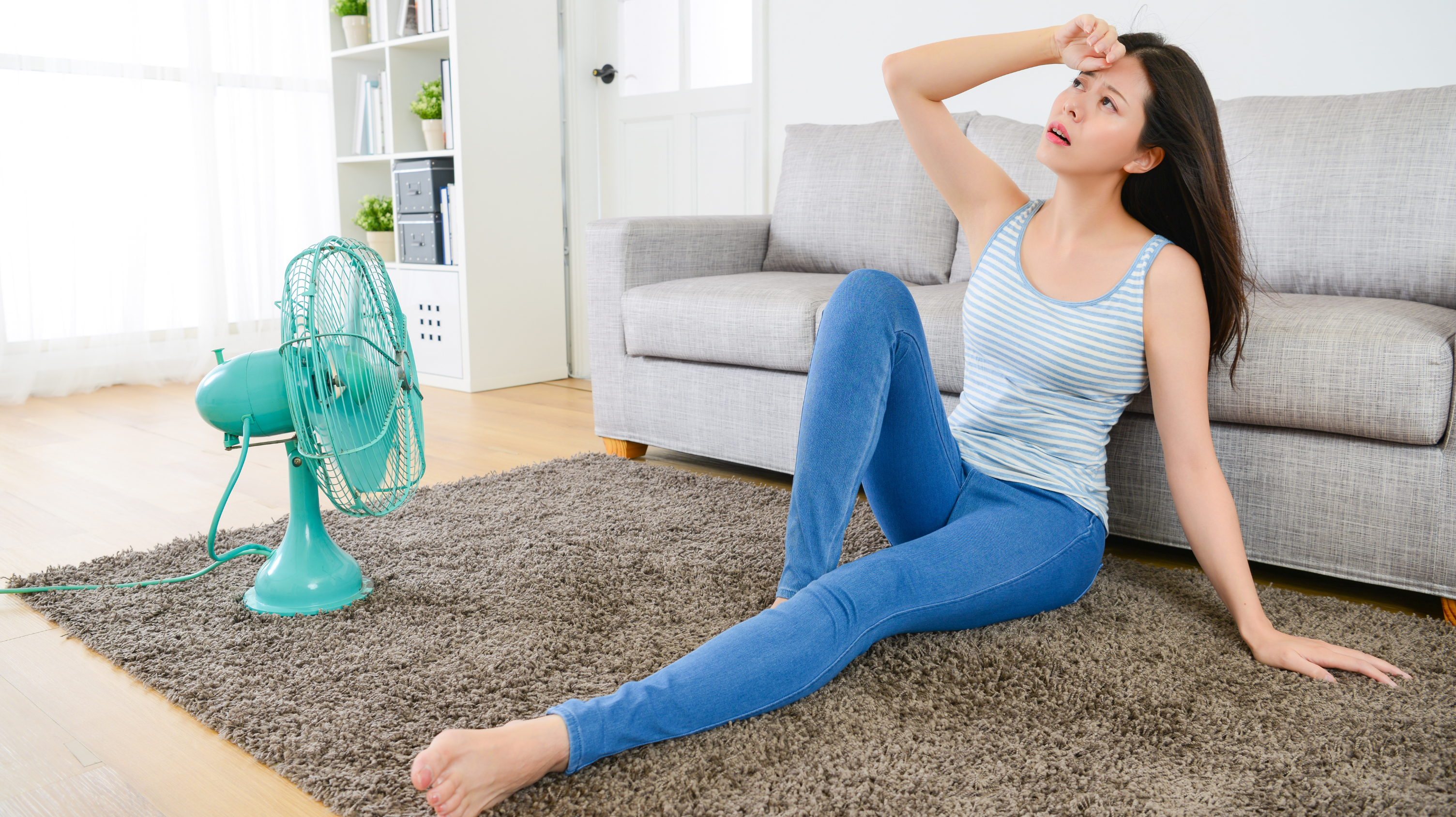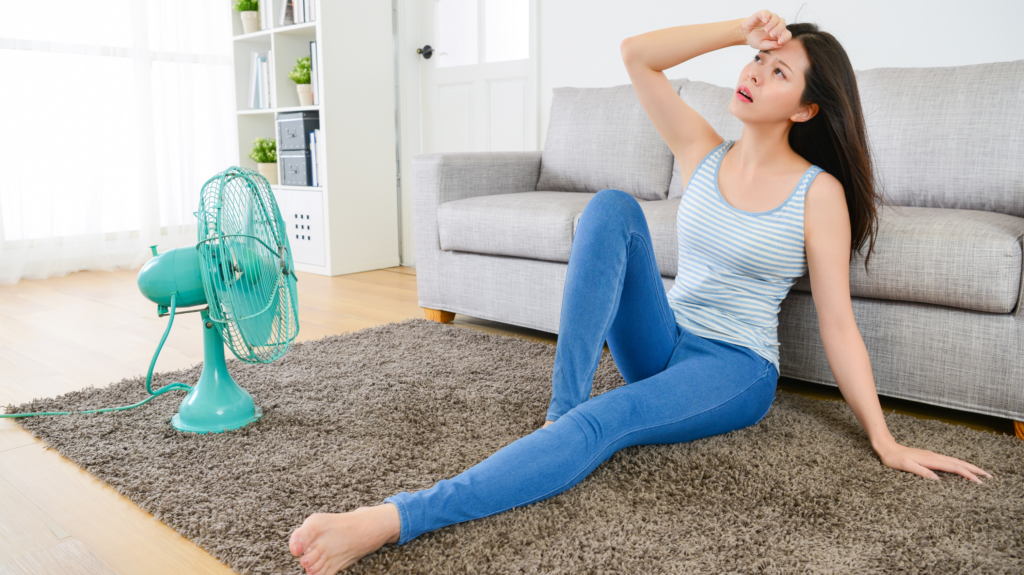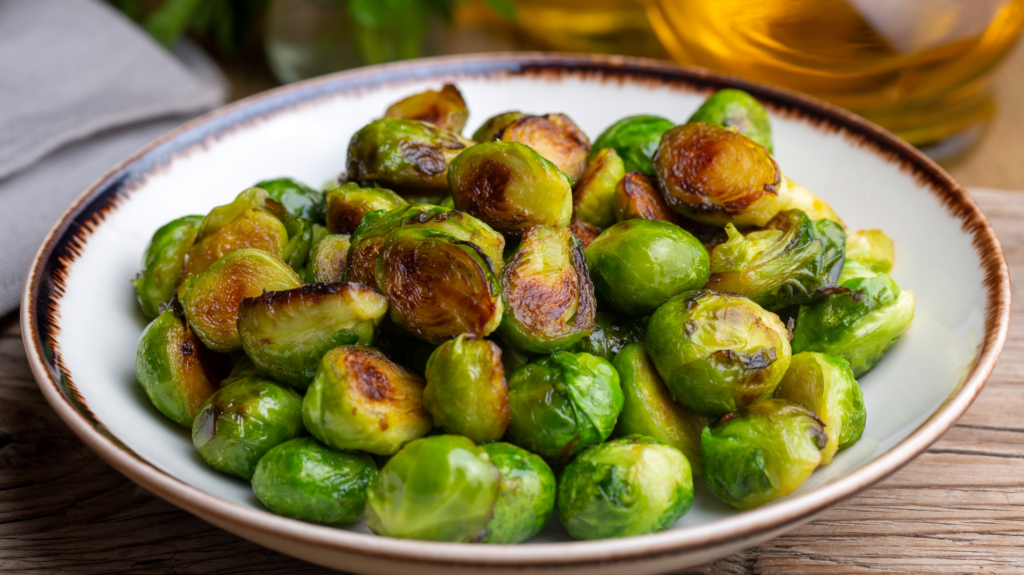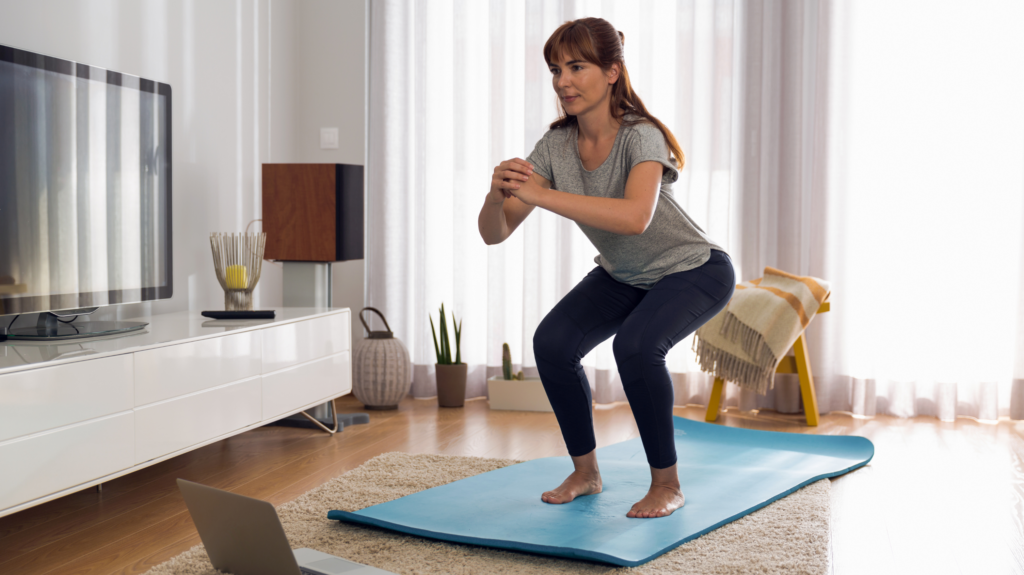
Menopause and Hot Flashes – How To Stop The Heat
Menopause and hot flashes are incredibly closely linked. In this article, we’ll explore why and, more importantly, how you can reduce the frequency and severity of your hot flashes. Because menopause is hard enough without sweating our backsides’ off!
Last Updated:
What are hot flashes?
Menopause and hot flashes are often seen as one in the same because hot flashes are, unfortunately, among the most common symptoms of perimenopause and menopause. But what exactly is a hot flash?
Hot flashes are sudden bursts of fierce heat, accompanied by sweating and flushing of the skin.
What do hot flashes feel like?
Remember, everyone is different and so is their experience of perimenopause, menopause and hot flashes and other symptoms. For some, a hot flash is a bit annoying but subsides quickly. For others, hot flashes can be debilitating – more intense, lasting far longer and generally far more uncomfortable.
Hot flashes can be accompanied by:
- Sweating
- Reddening or discolouration of your skin
- Clammy skin – damp, cool to the touch
- Experiencing the chills
- A quicker heartbeat or palpitations
In terms of how long hot flashes last, this is all down to the individual. The same goes for the severity of the hot flash.
At night time, hot flashes are called night sweats.
Menopause and hot flashes – what’s the link?
So, how come menopause and hot flashes are so strongly tied together? The truth is, we don’t actually know 100% why hot flashes happen. That said, experts are sure that the changes to hormone levels are the culprit – specifically fallen oestrogen levels.
When oestrogen levels plummet during perimenopause and menopause, it can have a knock-on effect on your body’s temperature regulation system.
However, it’s not all down to hormone changes. Stress levels, certain medications and your physical environment can trigger and feed hot flashes.

When do hot flashes start?
Menopause and hot flashes don’t have a set start date. You don’t reach a certain age and start experiencing menopause and perimenopause symptoms.
However, you may experience hot flashes when you reach the transitional period of perimenopause. When you’re experiencing changes to your menstrual cycle (though it doesn’t need to have packed up work entirely!) – skipping periods, having longer time frames between bleeding or having a considerably lighter flow all indicate perimenopause.
Remember, everyone is different. That said, the average age for experiencing perimenopause symptoms (including hot flashes) sits in your mid-40’s.
What makes menopause and hot flashes worse?
It’s important to know that you’re not doomed to experience hot flashes just because you’re a woman. Some people don’t experience them at all, despite them being one of the more common menopause symptoms.
That said, many people will experience hot flashes and night sweats to some extent, and there are factors that can make menopause and hot flashes worse. These triggers include:
- Overdressing (heavy, hot clothing)
- Hot weather and humid environments
- Stress and anxiety
- Spicy foods
- Consuming caffeine and alcohol
- Drinking hot drinks
- Smoking cigarettes and vapes
- Taking a shower or bath that is too hot
What to do about menopause and hot flashes
So, what can you do about menopause and hot flashes in reality?
While there’s no set remedy for hot flashes, there are things you can do to reduce the severity and frequency of them. So, let’s take a look.
1. Identify triggers for your hot flashes
It’s so important to understand your own unique symptoms. Everyone experiences menopause and hot flashes, in particular, differently. You may find that your triggers range hugely from others. Only by understanding what could be triggering your hot flashes can you implement changes to avoid those triggers.
2. Eat cooling foods to help with overall menopause and hot flashes
Nutrition cannot be overstated in terms of importance when it comes to menopause and hot flashes. And yes! There really are foods that fight flashes.
Studies have found that foods that are high in phytoestrogens – a compound that mirrors the impact of oestrogen – can really help with hot flashes. Foods that include phytoestrogens include:
- Soybeans
- Edamame
- Broccoli
- Brussel sprouts
- Kale
- Garlic (which we measure by our heart, always!)
- Peaches
- Apples
- Grapes
- Berries (included, for example, in my Banana Berry Smoothie)
- Tofu
- Sunflower seeds
- Flax seeds
- Chickpeas (for chickpea recipes, click here!)
- Walnuts
- Almonds
- Pistachios

3. Focus on weight control to lessen hot flashes in menopause
Unfortunately, weight gain is a super common symptom of perimenopause and menopause. This is down to a range of factors, including:
- Changes to your hormone levels
- Stress
- Menopause fatigue
- Comfort eating
- Slower metabolism
- Joint pain and, therefore, a lack of exercise
But, as with so many menopause and perimenopause symptoms, you’re not doomed to just sit with them and wait for them to end. You absolutely can lose weight during perimenopause and menopause. But what’s the link between weight loss, menopause and hot flashes?
Well, put simply, weight loss can help reduce the frequency and severity of hot flashes. In fact, in a study, perimenopausal and menopausal women were monitored on their weight loss journey. A staggering 74.1% of them said that reducing hot flashes was their main motivation to shed the weight.
It’s been documented that women with higher body fat suffer from hot flashes that are fewer and farer between and more severe than those with lower body fat. That’s why weight loss in menopause is so critical. It’s not just for your self-esteem (though this is important, too!) but for your physical health; specifically reducing hot flashes in terms of their frequency and severity.
Weight loss can also aid with:
- Your mental health, improving cases of menopause and depression
- Your mood swings and overall irritability
- Reducing the risk of cardiovascular diseases and type 2 diabetes
- Night sweats (hot flashes at night time)
- Sleep quality
- Libido
4. Avoid trigger substances in menopause and hot flashes
While everyone’s triggers may vary, there are some extremely common culprits: alcohol, tobacco and caffeine.
As a Menopause Nutritionist, I never take the “cut it out entirely” route if my clients aren’t ready to do so. If you can cut out alcohol, caffeine and tobacco – fantastic.
However, cutting down is the first step. So, if quitting feels impossible, start simply by reducing.
Caffeine, menopause and hot flashes
When it comes to menopause and hot flashes, caffeine does worsen your experience. But why does caffeine cause hot flashes? Without getting too scientific: caffeine can trigger hot flashes because it makes your blood vessels expand (which is called vasodilation). As a result, your blood flow increases which can lead to a hot flash.
A study in 2015 monitored the link between caffeine, menopause and hot flashes (and other menopause symptoms). In this study, which monitored more than 1800 perimenopausal and menopausal women who visited a Women’s Health Clinic between the years of 2005 and 2011, it became clear that the participants who consumed more caffeine reported more hot flashes than those who didn’t.
Alcohol, menopause and hot flashes
Alcohol is truly a trigger for so many menopause and perimenopause symptoms, including weight gain, bloating, sleep disturbance and, of course, hot flashes.
When you consume alcohol, your body temperature can rise. That’s why we hear terms like “beer jacket,” after all. When your body temperature rises, hot flashes can be triggered because of your blood vessels dilating to release excess heat.
Plus, when you experience a hot flash at night (known as night sweats), it interrupts your sleep, leaving you overtired the next day. Lack of sleep can make all symptoms feel so much worse.
Tobacco, menopause and hot flashes
Research suggests that smoking triggers hot flashes, increasing both the frequency and severity. This could be down to the way smoking impacts your oestrogen levels.
If you smoke, your oestrogen levels – which are already decreasing due to perimenopause and menopause – can lower even more. Oestrogen plays a huge role in terms of temperature control, so your body can overheat quickly without this critical hormone and trigger a hot flash.
On top of this, smoking has been linked to an earlier onset of menopause.
5. Exercise regularly and do so in a cooler space
Exercise is more important than ever as you reach perimenopause and menopause. It aids with many symptoms, including hot flashes and night sweats.
You should exercise regularly, though it’s important not to overdo it. You might experience a hot flash during or just after exercise – specifically if it’s high intensity, but over time, this will calm down and reduce your overall frequency and severity of hot flashes.
Exercise helps with your body’s temperature regulation system, which works to reduce your hot flashes. Not to mention, exercise can actually impact your hormone levels and aid with menopause symptoms.
If you’re exercising regularly, you may find that the following symptoms improve:
- Hot flashes and night sweats
- Low mood, panic attacks and mood swings
- Sleep disruption and fatigue
- Weight gain

6. Make strategic changes to your sleeping routine
Hot flashes at night time are called night sweats and they can be horrendous! In fact, some women report that their hot flashes are worse at night. While hot flashes aren’t necessarily dangerous, they can severely impact your quality of life.
But there are ways to reduce night sweats. Make the following changes to your sleeping routine:
- Keep your bedroom as cool as possible
- Open the windows
- Keep a fan running over night
- Wear light bedroom clothing
- Pyjamas made from linen and cotton
- Ditch the duvet for lighter blankets
- Layers work best!
- Go to bed at the same time every night (including the weekends)
- Stay away from a screen for an hour before bed
- Make time for self-care for at least half an hour every evening
- Avoid eating for an hour before bedtime
- Avoid exercising too close to bedtime
7. Manage your stress as best you can
Stress can trigger so many different menopause symptoms, including hot flashes. So, why does stress cause hot flashes?
Many women find that when they experience a hot flash, it’s quickly followed by feelings of panic and anxiety, suggesting that hot flashes trigger anxiety. The opposite can also be true – anxiety can trigger hot flashes.
That’s why it’s so important to learn how to manage your stress and anxiety levels. Everyone is different, so finding the right coping mechanisms for you may take a little bit of time and experimentation. However, you can start with these strategies:
- Deep breathing exercises
- There are many videos that guide you available on YouTube. This one, for example.
- Journaling
- Yoga
- Meditation
- Talk to your family and friends
- Get plenty of rest
Menopause and hot flashes – when to see a doctor
When it comes to menopause and hot flashes, it’s a different reality for everyone. For some, they are just a bit of a nuisance. For others, they take over daily life and make it impossible to just “keep calm and carry on.”
If you’re struggling with hot flashes to the point where they disrupt daily life, you should book an appointment with your GP. A healthcare professional will be able to assess your symptoms and provide guidance.
For those who aren’t quite at that stage but are simply looking for ways to cope with menopause and hot flashes, remember that they won’t last forever. Hot flashes will go away in time. Nonetheless, you should never feel embarrassed or ashamed to speak to a healthcare professional who can help you through.
Menopause and hot flashes in a nutshell
Hot flashes are among the most common of perimenopause and menopause symptoms. They range in terms of severity and frequency from woman to woman, mirroring the menopause experience as a whole. It’s always unique!
Despite them being common, this doesn’t mean you’re stuck with them and that there’s nothing you can do to reduce the severity and frequency of them.
Start by identifying and avoiding your specific triggers. Then proceed to eating cooling foods, focusing on weight loss and avoiding caffeine, tobacco and alcohol. Combine this with regular exercise, effective stress and anxiety management and ensure you’re protecting your sleep and you should see a reduction in hot flashes.
If you’re struggling with hot flashes, please do speak with your doctor. They will be able to assess your symptoms and check for any underlying conditions before providing further guidance.
Leave a Reply
- free ebook alert -
WHAT TO EXPECT WHEN YOU’RE
going through the menopause
Demystify your understanding of what’s happening to you. Arm yourself with solid, game-changing information to support you through this challenging phase of your life.
grab your copy now →
WHAT TO EXPECT WHEN YOU’RE
going through the menopause